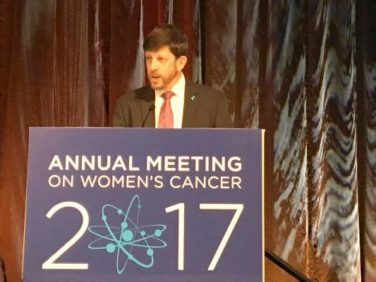AT THE SAHM ANNUAL MEETING
WASHINGTON (FRONTLINE MEDICAL NEWS) – Lesbian, gay, bisexual, transgender, questioning (LGBTQ) children and adolescents who are gender nonconforming are more susceptible to bullying at school than are those who don’t, so schools should make it a point to integrate LGBTQ outreach into its programs and to combat bullying against this group of students .
“In recent years, there’s been heightened national attention in the United States [on] harassment, bullying, and violence victimization, especially in schools and particularly targeting [LGBT] youth,” explained Allegra R. Gordon, Sc.D., of Boston Children’s Hospital.
“There’s substantial public health literature documenting an array of mental and physical health correlates of such victimization. However, there’s been less focus on discrimination and violence victimization targeting gender expression, broadly, although there is some evidence that this is an area of concern,” said Dr. Gordon, who presented the findings at the annual meeting of the Society for Adolescent Health and Medicine.
Dr. Gordon and her coinvestigators analyzed data on 5,503 public school students in grades 9-12 from four specific school districts in the United States: Los Angeles; San Diego; Chicago; and Broward County, Fla. These school districts were chosen because they had recently added a new question to the survey regarding socially assigned gender expression, making them the first districts in the nation to do so in 2013.
The data accumulated came from the 2013 Youth Risk Behavior Surveillance System , a survey conducted by the Centers for Disease Control and Prevention every 2 years to determine “the prevalence of health risk behaviors [and] assess whether health risk behaviors increase, decrease, or stay the same over time,” among other things.
The primary outcome of the study was to determine if sex and/or sexual orientation was in any way responsible for whether or not a student conformed to a specific gender – if not, the student was marked as GNC, or gender nonconformity – and if there was any association between GNC youths and in-school victimization. Youth who responded as being GNC were categorized as either most conforming, moderately nonconforming, or most noncomforming.
Nonconformity for each subject was defined based on “socially assigned gender expression, which is the extent to which a person is perceived by others as conforming or not conforming to culturally defined ideas of masculine or feminine appearance and behavior,” Dr. Gordon explained.
Results indicated a strong association between youths identifying as GNC and school-based victimization, with incidences of bullying increasing with greater GNC identification. Out of all GNC youth, 14% reported experiencing some form of bullying, 8% reported missing school because they felt unsafe being there, and 6% reported either being threatened or having been physically injured because of their gender identification.
After adjustment, Dr. Gordon and her coinvestigators found that the higher the degree of GNC a subject had, the more likely they would be victims of bullying, with steadily increasing odds ratios as the level of GNC rose: moderately nonconforming, 1.40 (range, 1.18-1.68) and most nonconforming, 2.01 (1.38-2.93). The latter group also had the highest odds of being absent from school, with an OR of 2.06 (2.10-4.44), and being either threatened with injury or actually getting injured having an OR of 2.79 (1.58-4.91).
“A key take-home here as well is given that the majority of the youth in the sample are heterosexual, the majority of youth in that most gender nonconforming group are heterosexual, so these are issues that apply across sexual orientation identities,” said Dr. Gordon.
Dr. Gordon did not report any relevant financial disclosures.




